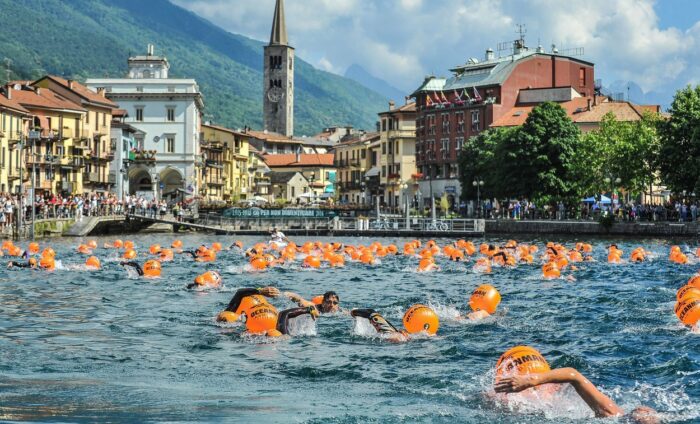
Remember, you can get too hot as well as too cold while swimming
I wrote last week about the dangers of being caught unawares by the cold when swimming outdoors (why swimmers are like boiled frogs). As swimmers, we mostly worry about the risks of cold and hypothermia but it’s important to recognise that getting too hot can be dangerous. In 2010, American elite open water swimmer Fran Crippen died during a FINA 10km race in the United Arab Emirates. While the exact cause of death is unknown, it is speculated that over-heating may have been a factor. The water temperature was in excess of 30 degrees, Fran had complained of feeling thirsty at the 8km mark and several other swimmers were treated for heat-related symptoms after the race.
After my recent brush with hypothermia after a 10km swim in Paris, friends and family urged me to wear a wetsuit for my next long swim – 14km in Lago D’Orta – which I did. The water temperature was in the low 20s: similar, but possibly slightly warmer than in Paris where I’d got too cold. Despite this notionally warm temperature, a couple of non-wetsuit swimmers looked like they were suffering from cold at the end, so given that I don’t seem to be tolerating cool water very well at the moment, a wetsuit was the sensible option.
This was the longest continuous swim I’ve done in a wetsuit (the Thames Marathon is the same length but is current assisted and involves four walks around locks) and I have to say that swimming in neoprene is not necessarily easier than swimming without. Yes, you keep warmer and swim faster (at least most people do) but you suffer for it. My arms and shoulders tired much more quickly than without a wetsuit, and my lower back began to ache after about 8km. But worst of all was the heat, and the increasing feeling of being constricted and wanting to rip away the neoprene.
At the end I felt sick, shaky and drained. Normally, I can’t bear Coca Cola, but I had a sudden immense craving for brown coloured carbonated sugar water and quickly drank four cups, along with a similar quantity of water. I then had to stand in the lake, without my wetsuit, to cool off and sit in the shade for 20 minutes before I felt like moving again. Despite drinking copious amounts, I barely needed the toilet for the rest of the day or even the next.
That said, getting too hot was, for me, a less unpleasant experience than getting too cold, and the recovery was much quicker. Getting too cold was much worse and more frightening. However, getting too hot is definitely a thing, and swimmers, especially those who wear wetsuits, should be aware of the dangers. If you find yourself in a situation where you might get too hot, take a few common-sense precautions.
- Drink plenty of water before you start
- Leave putting on and zipping up your wetsuit until the last possible moment
- If you have to wait on land before swimming, try to sit or stand in the shade
- Pour cool water into your wetsuit
- Consider not wearing a hat (hats are often compulsory in races and useful for visibility so be cautious with this)
- While swimming, occasionally let water into your suit by tugging gently at the neck
- Drink water frequently
- Stop and seek assistance if you feel sick, dizzy or excessively thirsty.








